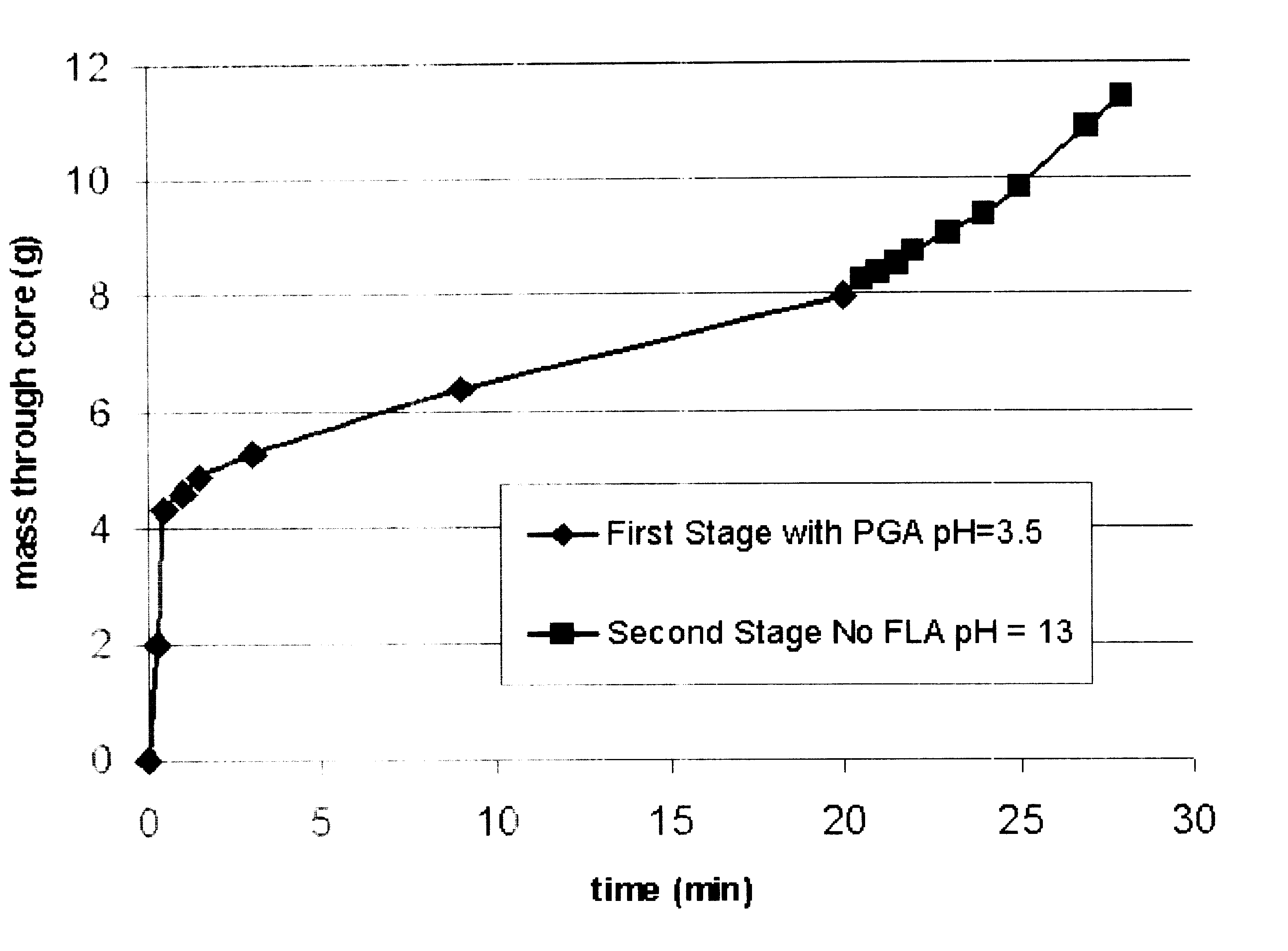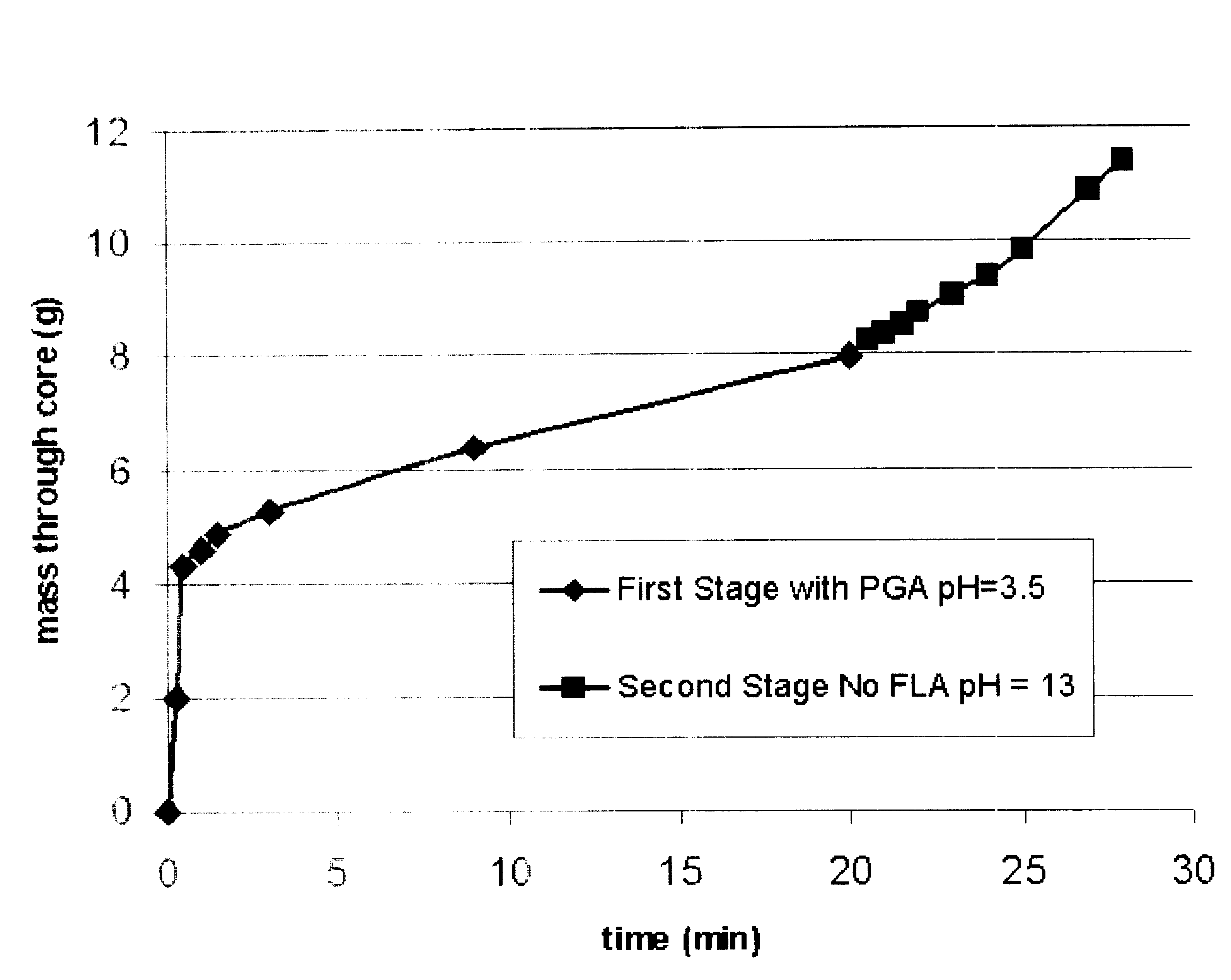Dissolving Filter Cake
- Summary
- Abstract
- Description
- Claims
- Application Information
AI Technical Summary
Benefits of technology
Problems solved by technology
Method used
Image
Examples
example 2
[0067] The ease of hydrolysis and dissolution of Dupont PGA TLF 6267 was determined by suspending samples of the PGA in water adjusted to different pH's. 0.2 Weight percent sodium sesquicarbonate was used to buffer at pH 10. For pH 12 the fluid was adjusted by adding either KOH and NaOH with identical results. The suspensions were heated to the desired temperature, held at that temperature without stirring for the indicated time, and the results were noted. The PGA was considered dissolved when none was visible in the solution to the unaided eye. Results are given in Table 1, and show how simple experiments can be used to determine the pH at which a given solid base-soluble material will dissolve at a given temperature in a given amount of time.
1 pH Temperature, .degree. C. Dissolution time 10 66 .about.10 hours 12 66 <1 hour.sup. 10 116 <1 hour.sup.
PUM
 Login to View More
Login to View More Abstract
Description
Claims
Application Information
 Login to View More
Login to View More - R&D
- Intellectual Property
- Life Sciences
- Materials
- Tech Scout
- Unparalleled Data Quality
- Higher Quality Content
- 60% Fewer Hallucinations
Browse by: Latest US Patents, China's latest patents, Technical Efficacy Thesaurus, Application Domain, Technology Topic, Popular Technical Reports.
© 2025 PatSnap. All rights reserved.Legal|Privacy policy|Modern Slavery Act Transparency Statement|Sitemap|About US| Contact US: help@patsnap.com


